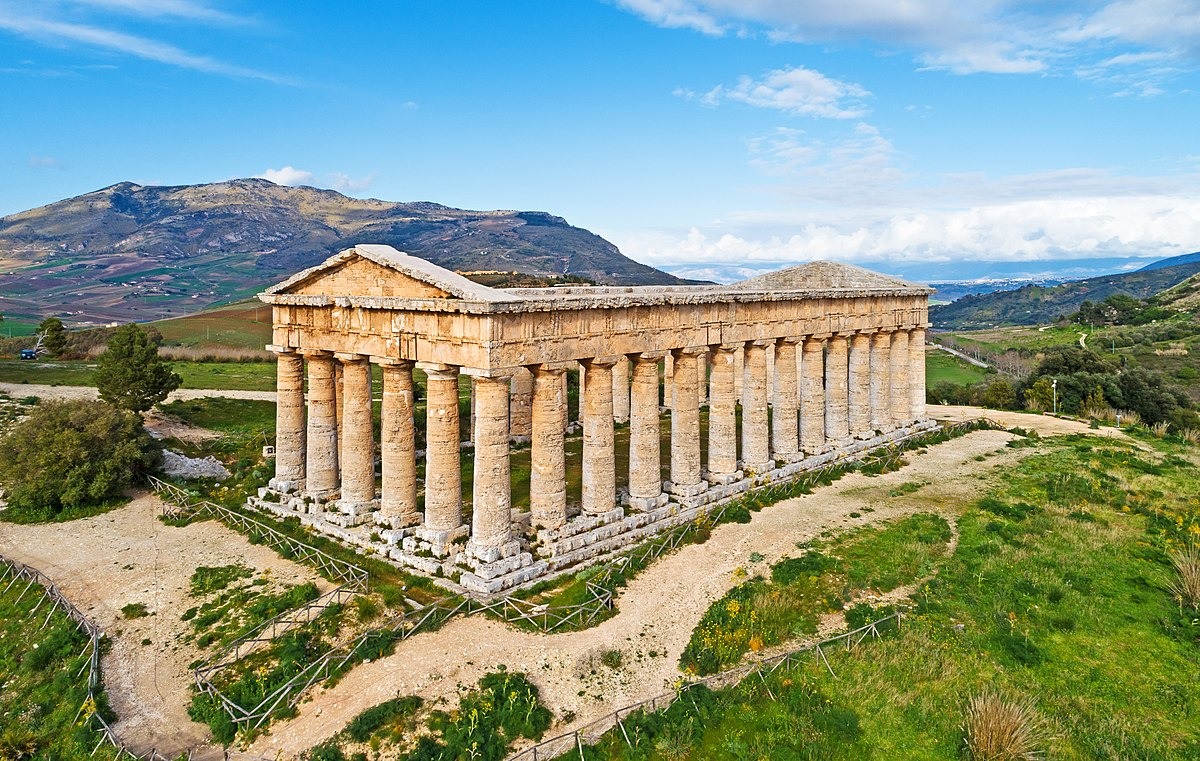
On Friday, local authorities on the Italian island of Sicily reported the discovery of an ancient Greek altar at the archaeological site of Segesta.
The altar is about 2,000 years old and dates back to the Hellenistic period just before the rise of Rome as a major power in the Mediterranean.
The ancient Greeks had a strong presence in southern Italy with colonies dotted all over Sicily and the mainland. In fact, the Romans referred to the region as “Magna Graecia” – “Great Greece” in Latin – owing to the ubiquitous presence of Greeks in the area.
Ancient Greek altar unearthed in Sicily
According to the regional government of Sicily, the discovered altar is believed to have been actively used during the peak of Hellenic cultural influence, shortly before the ascent of the Roman Republic in the first century BC. It was likely used by a family for worship within the household.
The altar had remained buried under a thin layer of soil and vegetation in the Southern Acropolis area of the Segesta site, located in the western part of the island, for several centuries.
“The Segesta site never ceases to amaze us,” commented Francesco Paolo Scarpinato, Sicily’s regional culture minister.
“Excavations continue to bring to light… pieces that add new perspectives and interpretations to a site where multiple civilizations are stratified,” he continued.
Ancient Greek altar unearthed at archeological site in Sicily https://t.co/QShJX09t1A
— The Globe and Mail (@globeandmail) June 30, 2023
Magna Graecia: The Greeks of Southern Italy
From 700 BC to 500 BC the Greek colonies in the regions of Sicily and present-day mainland Italy multiplied, creating the area known as Magna Graecia.
According to modern historian Mogens Herman Hansen, more than 46 Greek colonies were founded in Sicily and more than 22 in southern Italy.
A “second Greece” of a kind was formed in these areas, which amounted to a population and area that was just a little smaller than metropolitan Greece, hence the name Magna Graecia.
The newer Greek residents were mostly from Rhodes and Crete as well as the Achaeans of Messinia. However, not all Greek colonies in today’s Italy were established peacefully.
Older settlers in these cities owned large estates cultivated by indigenous slaveholders; they formed a very insular aristocracy that reacted negatively to the economic and political advancement of the younger settlers.
Shortly before 600 BC the Rhodians founded Parthenope, the forerunner of Naples. At the same time, Greeks from Evia lived on the islands of Pontia and Pandateira (now Capri).
Syracuse, also known as Siracusa, was founded by Corinthian settlers in 733 BC, the second Greek city to be founded on the island after Naxos.
The natives were well-disposed towards the Greek colonists, and Syracuse soon grew in size until it became the most powerful Greek city-state in Sicily and the Mediterranean.
See all the latest news from Greece and the world at Greekreporter.com. Contact our newsroom to report an update or send your story, photos and videos. Follow GR on Google News and subscribe here to our daily email!



